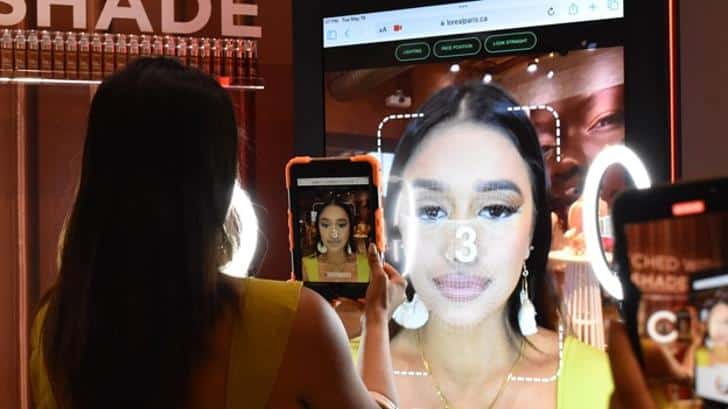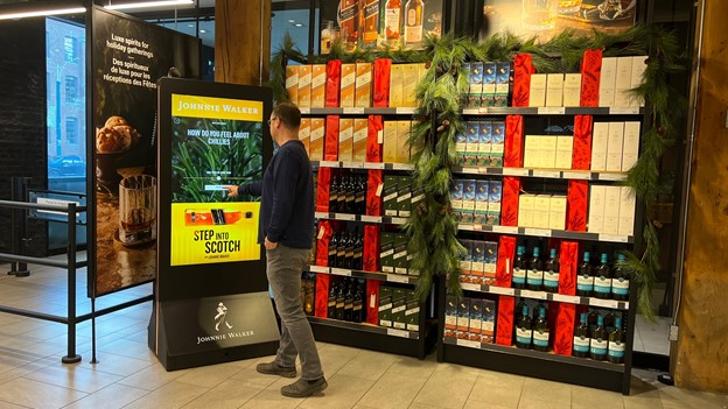
Brands invest a lot of their time and energy into digital engagement, but almost all of their efforts are restricted to social media and web assets. Meanwhile, over 80% of sales take place in the real world.
Despite the rapid and continuing growth of online retail, physical stores continue to dominate the retail sphere. Brands that overlook their in-store experience are leaving a lot on the table. Their customers still make the vast majority of their purchase decisions in physical store locations, and retailers are missing out on opportunities to influence their decisions and push sales where those decisions happen.
With BIG Digital solutions, you have the tools and technology at your disposal to revolutionize consumer engagement in the real world. It’s time to invest your energy in the same space that your customers spend their money.
How Interactive Kiosks Can Push the Boundaries of Consumer Engagement in Retail
What differentiates the retail store from shopping online? How has physical retail held on despite the convenience of online, and why did the growth of online slow down post-pandemic?
There’s no shortage of reasons why people prefer to shop in the real world. They want better customer service, they don’t want to pay for shipping, they need what they’re looking for right now, or they want to make sure they can try it on, hold it in their hands, and see what it looks like before they buy it. They also want the experience that comes with shopping. Some of the most successful retailers have focused on creating a unique experience and atmosphere in their stores that simply can’t be replicated online.
Digital kiosks have the power to revolutionize consumer engagement in the retail sector. They bridge the gap between brick-and-mortar retail environments and the cutting-edge of interactive technology today. Here’s how bringing digital interactive kiosks can transform consumer engagement for your brand.
AI Avatars
Artificial intelligence is driving change in industries across the board, and retail is no exception. AI avatars are a new, smarter way of engaging digitally with consumers. Imagine combining the welcoming presence of your best brand ambassador with a data-driven understanding of your customers and their shopping preferences.
AI avatars can engage with consumers in a whole new way. The best way to introduce them to your retail environment is through kiosks with AI technology. Interactive kiosks provide an easy interface for retail consumers to interact with AI avatars. Lean on them to deliver the perfect tone for your brand and invite consumers to explore new products, promotions, and more. Let AI avatars guide consumers through their purchasing decisions and influence with a light touch.
Augmented Reality
Augmented reality with a digital kiosk and mobile integration can become a powerful tool for retailers who want to create a radical shift in the retail experience. One of the most popular ways augmented reality is entering the retail sector is as AR mirrors or Vanity Mirrors. This is where a digital image of clothes or fashion accessories is superimposed on a digital image of the consumer. It’s an incredible way for consumers to quickly see what something might look like on them. It may not be able to replace the size fitting of a real change room, but it can help consumers make quicker decisions. Integrated into an outdoor kiosk, an AR mirror is also an incredible fitting room substitute for outdoor brand activations and pop up commerce activations.
Gamification
Successful brand activation strategies need something to make them notable, something that gives consumers value (whether that’s material or experiential), and something that will foster a stronger bond between the brand and the consumer.
One way to accomplish all three of those goals is with a gamification experience. It’s interactive, it’s fun, it can be tied into a contest, and it gives brands an opportunity to capture leads. Gamification experiences can be custom or off-the-shelf, and all of these experiences can be made possible through interactive kiosks and displays.
Bring Digital Assets IRL
You’ve invested a lot in your digital assets. Why not bring them into the physical world? All it takes is an interactive digital kiosk that can put those digital assets on display in your stores. A digital kiosk can help you complete the ambiance of the retail environment and integrate digital assets seamlessly into your physical space. Extend your online commerce into the physical world with the help of interactive kiosks.

What Can Interactive Kiosks Do In-Store?
When brands put on a sponsorship activation, they leverage all of the tools at their disposal to attract consumers’ attention and get them to engage. When they put that same energy into enhancing the retail environment, they can bring immersive experiences in-store, influence consumer decisions where they happen, and drive revenues.
Push New Contests and Promotions In-Store
Contests and promotions are classic brand activation strategies that generate interest, capture leads, and get consumers personally invested in your brand. In-store interactive kiosks can be much more effective than staff at getting consumers interested in your contests and promotions and getting them to engage.
An interactive kiosk can display Calls-to-Action and information that will hook consumers and get them to sign up. A successful contest is one that captures more leads and introduces your marketing team to wider audiences.
Drive Revenues with Self Serve Kiosks
The self serve kiosk isn’t just for the QSR sector any more. High-quality interactive digital kiosks powered with augmented reality and AI can double as both your brand ambassadors and a cost-efficient way to speed up checkouts. Shorter lines and faster checkouts can improve customer satisfaction and make sure people don’t hesitate to go shopping in person.
When you’re designing a self-serve kiosk, you want to make sure that the interactivity is seamless and stress-free. You don’t have to look further than the grocery store to see how self serve can backfire, but some fashion retailers have gone the extra mile to make sure their process has made it easier to skip the line than ever.
Lead Generation and Data Capture
In addition to driving revenues through direct sales, interactive kiosks can also generate leads and capture data that creates important insights into consumer behaviour. Interactive kiosks can quickly generate leads through promotions, gamification, or other interactive experiences that get consumers to quickly scan a QR code or include their information. They can also capture information about your consumers, such as what products they’re interested in, how long they engage with interactive displays, and what retailers can do to convert them into customers.
Lead Donation Campaigns for Non-Profit Partners
Cause marketing campaigns with a non-profit or charitable partner are incredible for consumer engagement. It’s a way for retail brands to show their values and back them up with the partnerships they choose to make.
While charity checkout campaigns remain successful, a donation kiosk in your retail environment has the potential to do so much more. Once people reach the checkout, they’re typically ready to get out and get on with their day. When they’re still shopping, they have more time to stop, explore what your non-profit partner does, and learn about how your brand champions its values through action. They also give consumers more options for how they want to support your non-profit partners. Give them options that go beyond donating some spare change at checkout, and show them how their donations help.
BIG Digital’s interactive kiosks have the power to revolutionize consumer engagement. Transform the retail environment and influence consumers in the same space where purchase decisions happen


